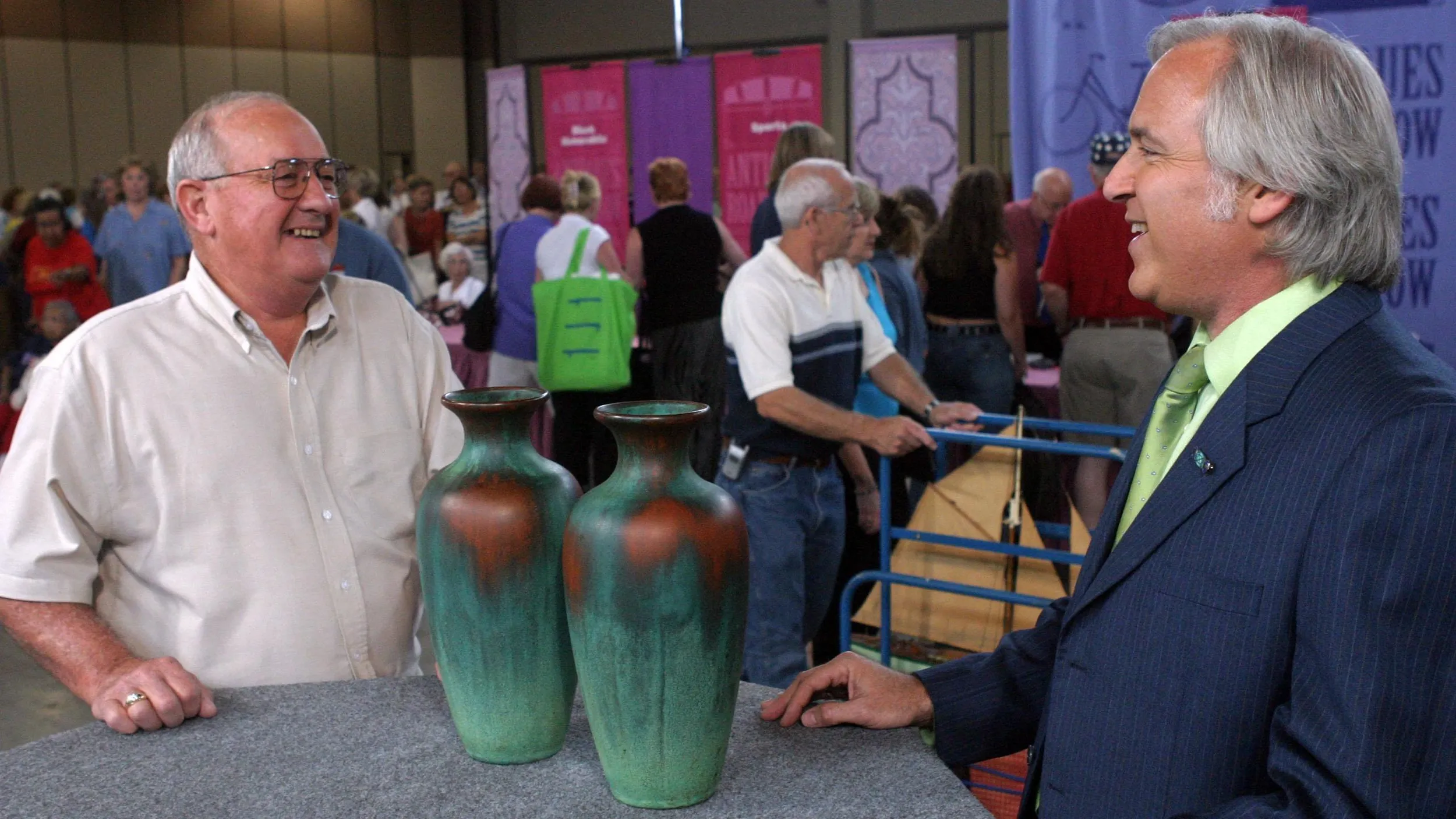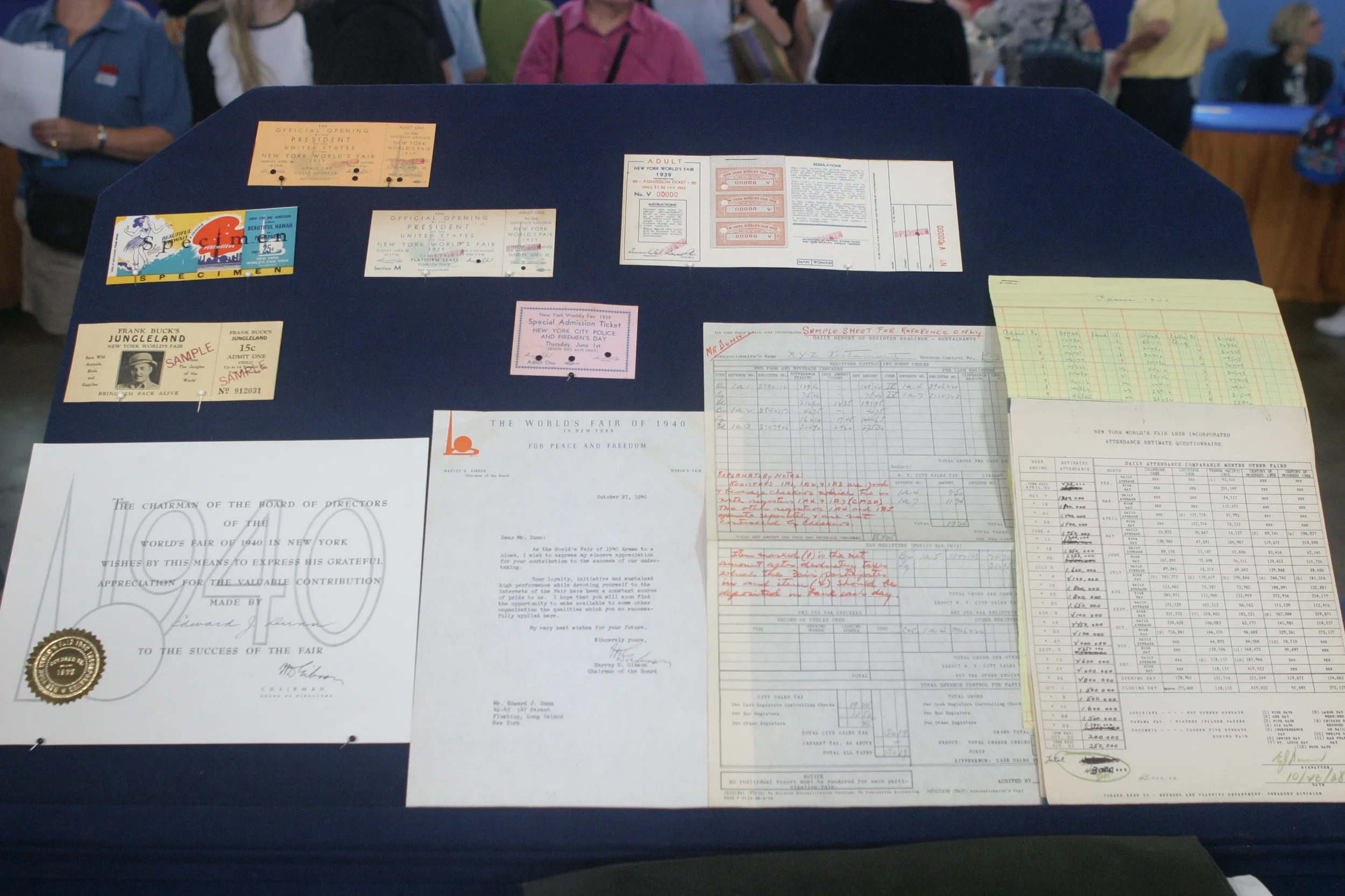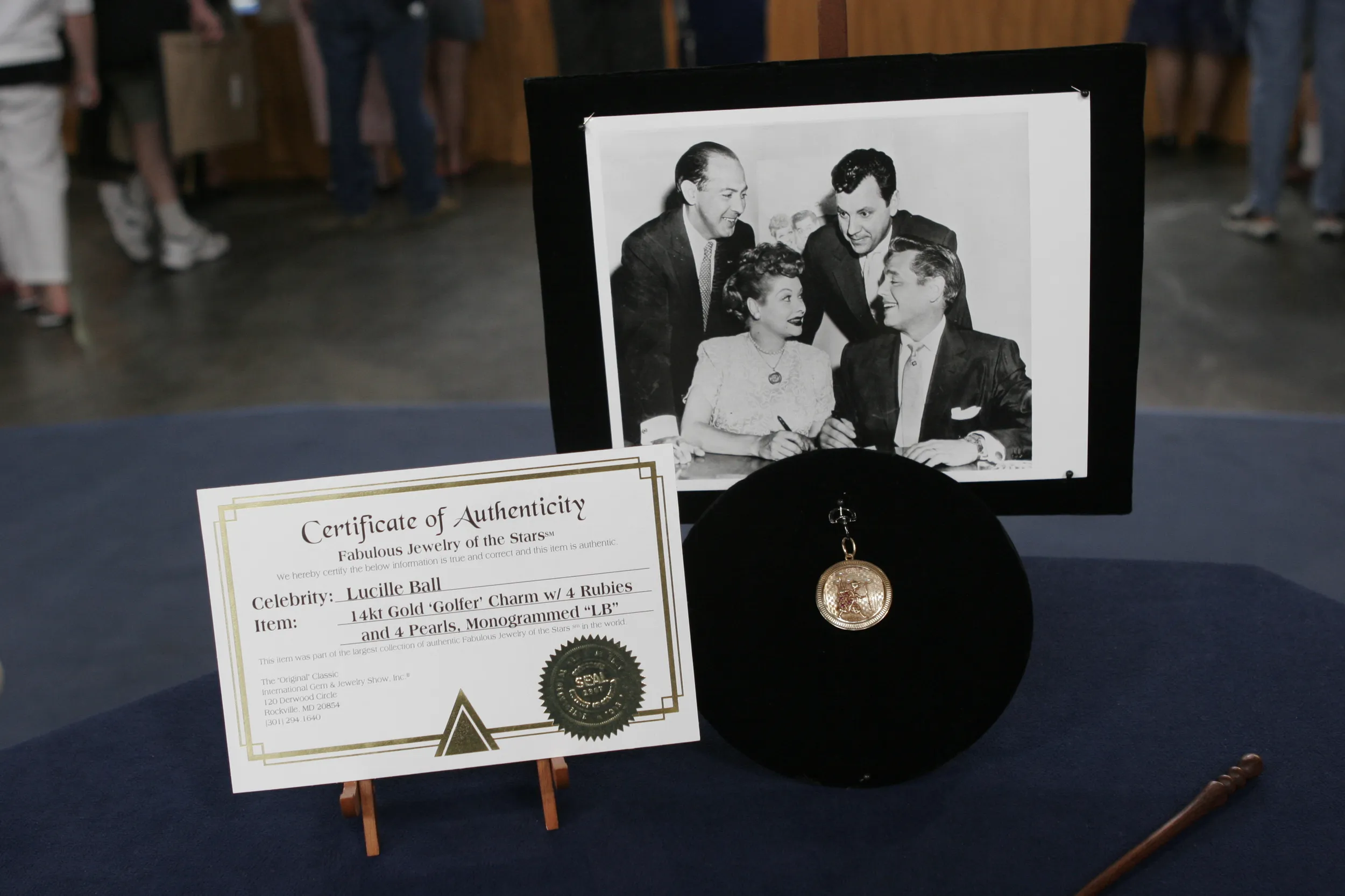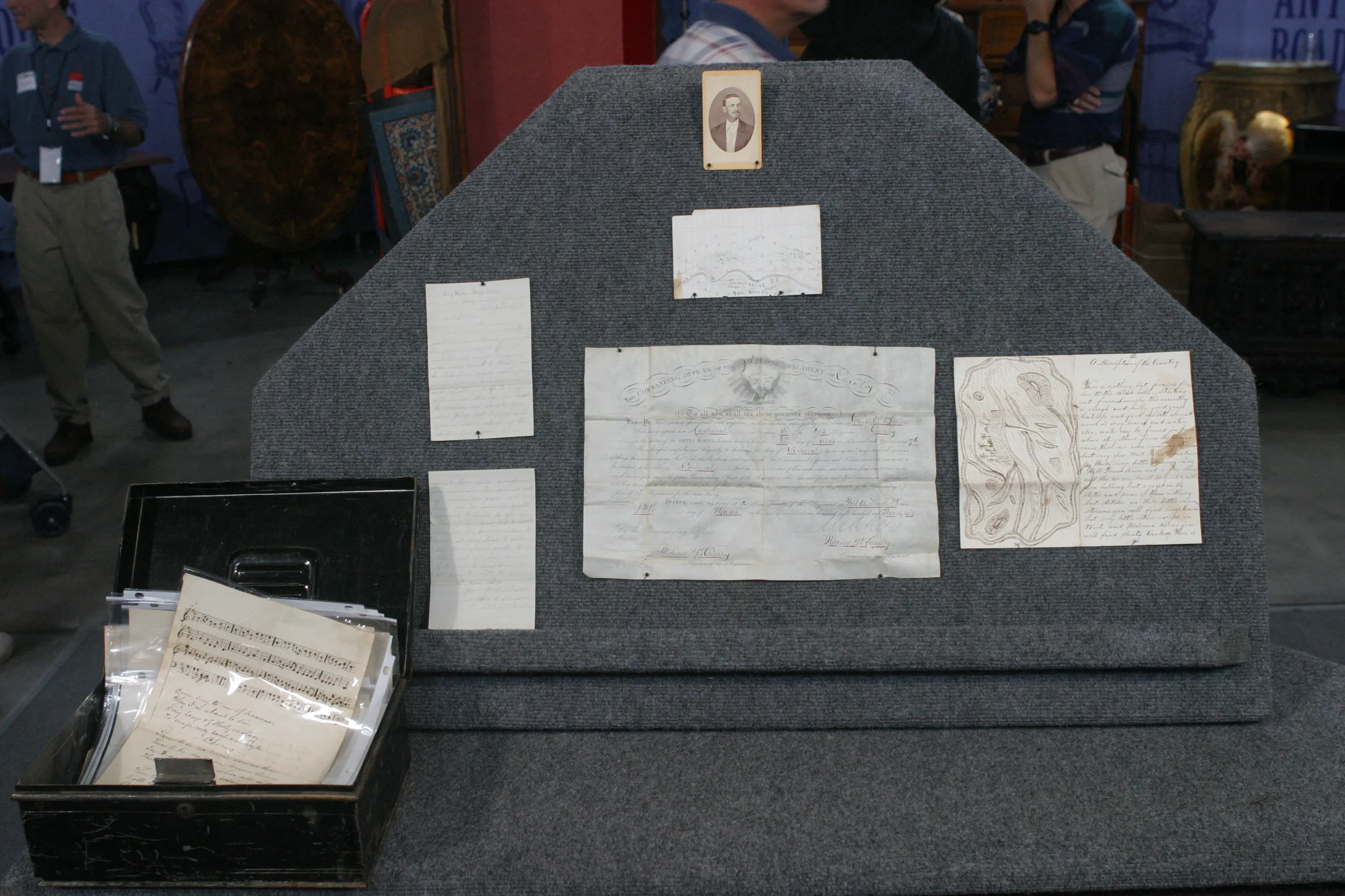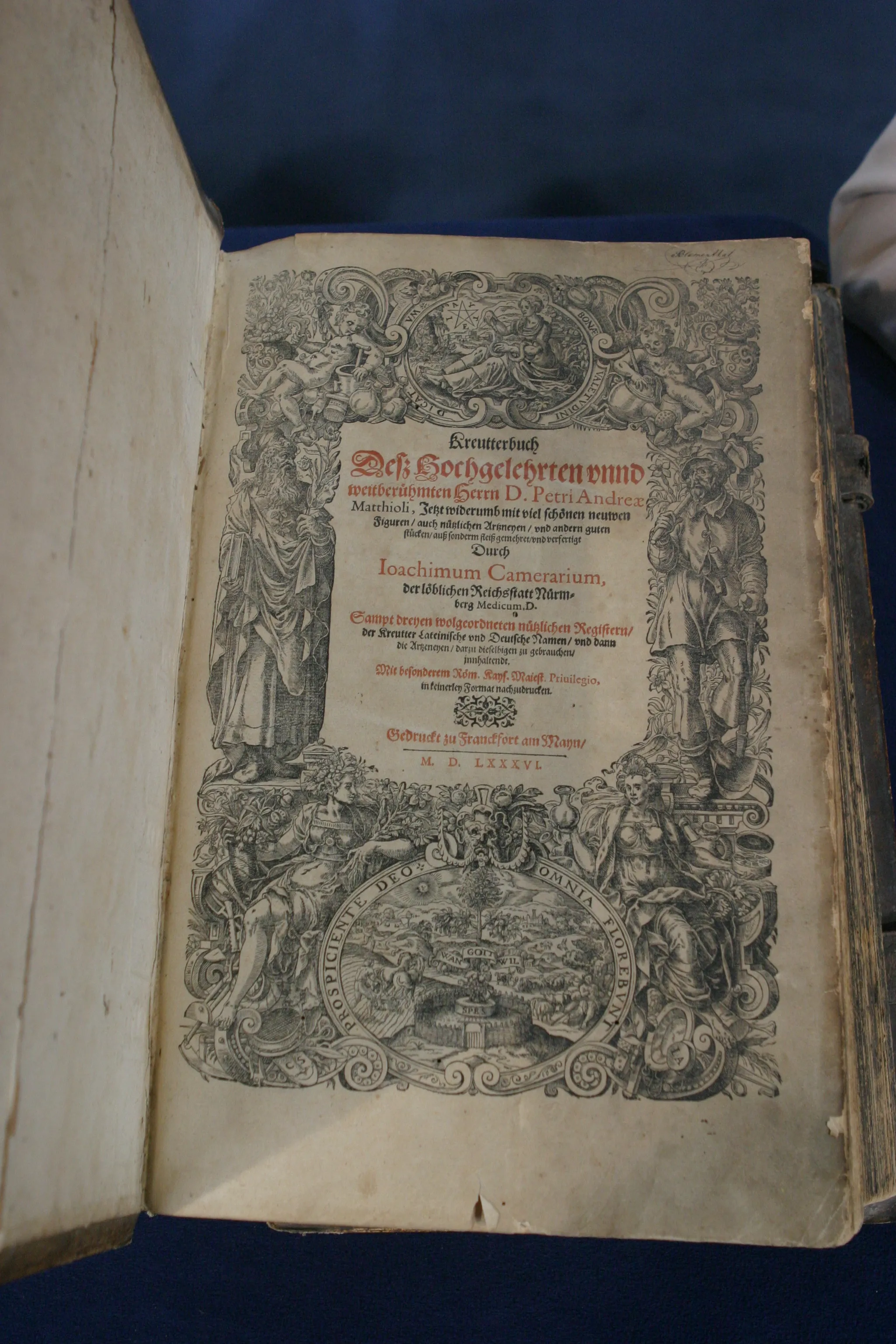APPRAISER: This a collection of Bill Graham material related to his concerts-- promotional material.
GUEST: Right.
APPRAISER: The vast number of collectors of this material go for the posters. You have one example of a poster here in your collection. Here is the poster. You have the flyer, and you have the tickets. For every poster that Bill Graham did, just about, he did a handbill. Very few people collect the handbills. They might collect a poster and then say, "I'll get the handbill to go with it." But you've amassed an almost complete collection of every Bill Graham handbill. Is that right?
GUEST: Yes, I lack three.
APPRAISER: There are three that are missing. What made you decide to focus on that?
GUEST: Well, two things-- storage space, and I love miniatures, and each one of these is a little miniature piece of art.
APPRAISER: Exactly-- it's a miniature poster. Dealers just love Bill Graham, because he numbered all of his posters.
GUEST: Exactly.
APPRAISER: You want to point out the number on that one there?
GUEST: This is 231.
APPRAISER: And this here, the Jefferson Airplane, is number one.
GUEST: Exactly.
APPRAISER: That was the first in the series.
GUEST: Yes, sir.
APPRAISER: And people are familiar with this artwork, of course. This is Wes Wilson. And this is the height of the psychedelic San Francisco movement. Whenever you refer to the San Francisco psychedelic movement, you're talking about Bill Graham posters, basically.
GUEST: Exactly.
APPRAISER: And this is an interesting piece. It is very seldom seen.
GUEST: I loved it because Jimi Hendrix was third on the bill.
APPRAISER: Right. And that's his first appearance at...
GUEST: After the Monterey Pop Festival, yes, sir.
APPRAISER: Right. This one says, "Copy."
GUEST: Right, I've been looking for that one for 18 years.
APPRAISER: This is sort of a Holy Grail?
GUEST: It is the Holy Grail. That's when Bill Graham took the five major rock bands to Toronto, and he shipped all the paper ephemera over land, and the truck was stolen.
APPRAISER: And so there's almost none of these in existence.
GUEST: Almost none.
APPRAISER: And this piece here is the famous flying eyeball, by Rick Griffin. Have you ever had a valuation put on this stuff?
GUEST: Oh, just with the guys that I trade with. I've never had a real appraisal.
APPRAISER: Individually, they sell anywhere from $50 into the high hundreds. What's the most you've ever paid for one?
GUEST: I paid $1,200 for the one for the play, "Call the Beard."
APPRAISER: That was a non-concert one.
GUEST: Right.
APPRAISER: Yeah, but it fits into the series, because it's... the numbers fit in.
GUEST: Exactly-- it is one of the numbered.
APPRAISER: It was a play that Bill Graham produced.
GUEST: Right.
APPRAISER: Yeah. If you were to break up the set and sell them individually, you would gross about $18,000 to $20,000 for the entire collection. But you have something else here. Often, the total is worth more than the sum of the parts. You have an almost complete collection.
GUEST: Right.
APPRAISER: As complete as anybody can get, practically. And I would think that if you were to take this and sell it as a collection, a unit, and not break it up, at a pop culture auction, you'd be looking at in the range of $28,000 to $30,000 for this collection.
GUEST: I'm shocked-- I'm shocked. Well, that's...
APPRAISER: That's what comes from really paying attention to the details of a collection. Thanks for bringing it in.
GUEST: It was my pleasure-- thank you.

